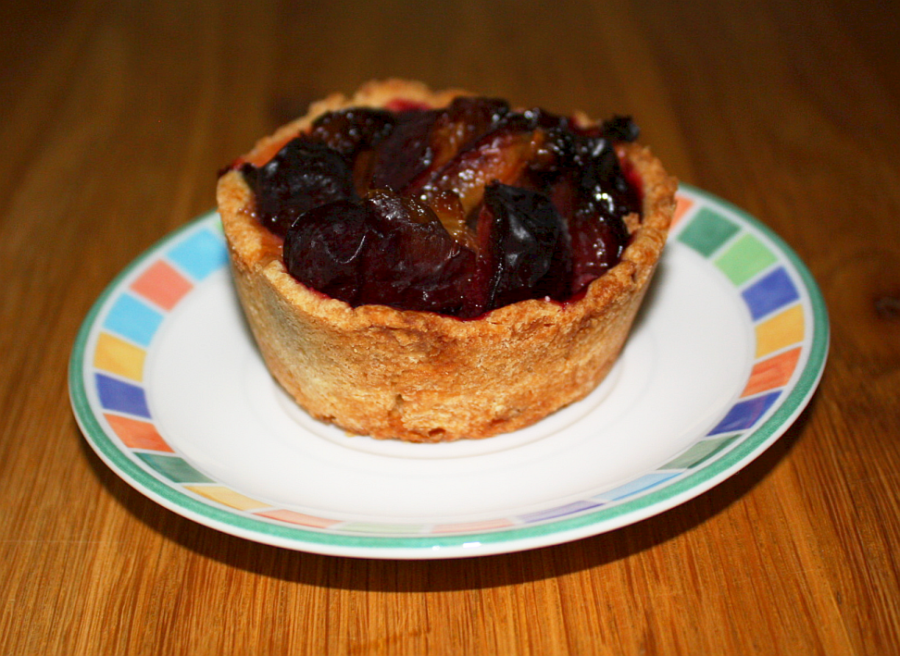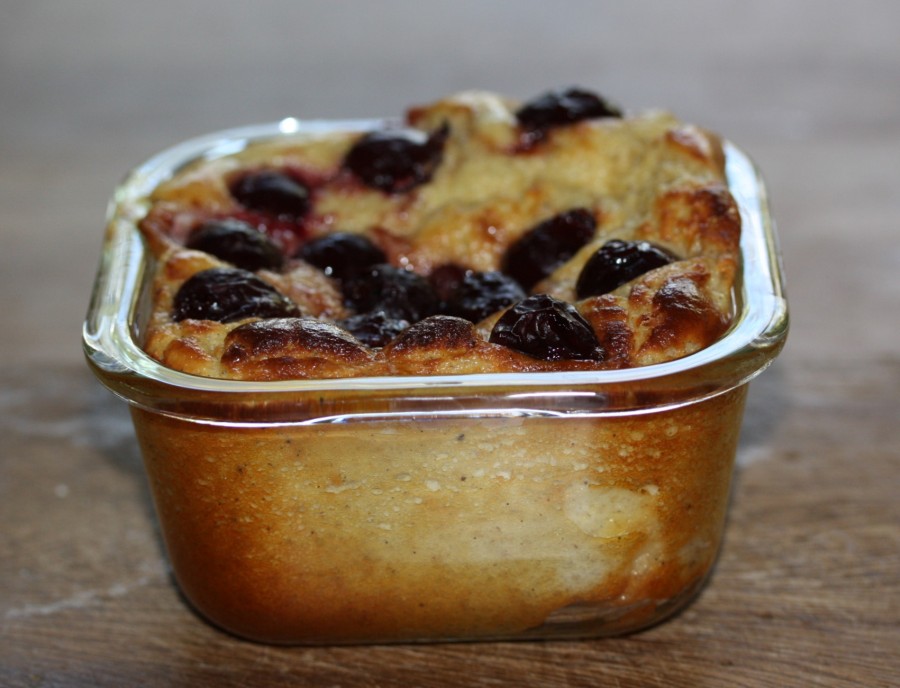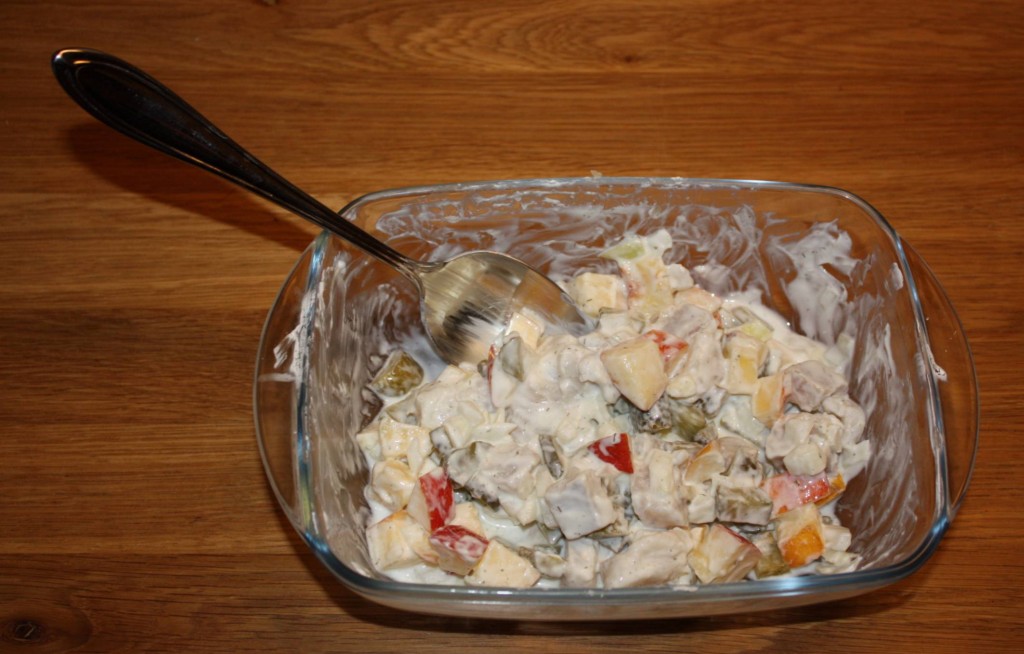It's damson plum season here, and that means... cake time. Plum cake time! "Zwetschgenkuchen", as it is called here, is one of my favourite cakes ever, and there has to be some of it every single year when the damsons are ripe.
This year, I did some experimenting with the fruits on a shortcrust base, and accidentally stumbled across my new totally favourite shortcrust recipe. The secret's not in the sauce, but in the sugar:
450 g flour (I use spelt flour)
100 g mascobado cane sugar (I use the GEPA sugar)
1 large egg
250 g butter
pinch of salt
That's it - worked like the usual shortcrust pastry dough: mix flour and sugar, crumble in the butter so you have a homogenous mixture of small powder-coated butter bits, then knead in the egg until you have a smooth dough. Let it rest in a cool place for at least one hour.
Bake at about 175° C in a fan oven.
Shortcrust dough is lovely anyways, but the mascobado sugar adds a kind of rich caramelly taste that is just... wonderful. Normal brown sugar will alter the taste of baked goods, and mascobado does the same but to a slightly different taste, which I prefer a lot to the "normal" sugar. (I'm using this stuff for almost all my sweetening needs these days. Totally in love with it.)
Half of this amount of dough will be enough for one 26 cm round cake or 12 thin muffin-sized shells; the whole amount is enough for one baking sheet. Cover with halved damsons (at least 750 g for the round cake; you can fit much, much more if you set them almost vertical). If you put a little dry semolina on the dough before putting on the fruit, it will soak up juices and prevent the crust from getting too soggy too quickly. Bake for about 30-35 minutes... and enjoy.
[caption id="attachment_2586" align="alignnone" width="640"] A muffin-sized shell filled with damsons. There's my name written on it. (As in: I will definitely eat it this afternoon...)
A muffin-sized shell filled with damsons. There's my name written on it. (As in: I will definitely eat it this afternoon...)
This year, I did some experimenting with the fruits on a shortcrust base, and accidentally stumbled across my new totally favourite shortcrust recipe. The secret's not in the sauce, but in the sugar:
450 g flour (I use spelt flour)
100 g mascobado cane sugar (I use the GEPA sugar)
1 large egg
250 g butter
pinch of salt
That's it - worked like the usual shortcrust pastry dough: mix flour and sugar, crumble in the butter so you have a homogenous mixture of small powder-coated butter bits, then knead in the egg until you have a smooth dough. Let it rest in a cool place for at least one hour.
Bake at about 175° C in a fan oven.
Shortcrust dough is lovely anyways, but the mascobado sugar adds a kind of rich caramelly taste that is just... wonderful. Normal brown sugar will alter the taste of baked goods, and mascobado does the same but to a slightly different taste, which I prefer a lot to the "normal" sugar. (I'm using this stuff for almost all my sweetening needs these days. Totally in love with it.)
Half of this amount of dough will be enough for one 26 cm round cake or 12 thin muffin-sized shells; the whole amount is enough for one baking sheet. Cover with halved damsons (at least 750 g for the round cake; you can fit much, much more if you set them almost vertical). If you put a little dry semolina on the dough before putting on the fruit, it will soak up juices and prevent the crust from getting too soggy too quickly. Bake for about 30-35 minutes... and enjoy.
[caption id="attachment_2586" align="alignnone" width="640"]
 A muffin-sized shell filled with damsons. There's my name written on it. (As in: I will definitely eat it this afternoon...)
A muffin-sized shell filled with damsons. There's my name written on it. (As in: I will definitely eat it this afternoon...)





